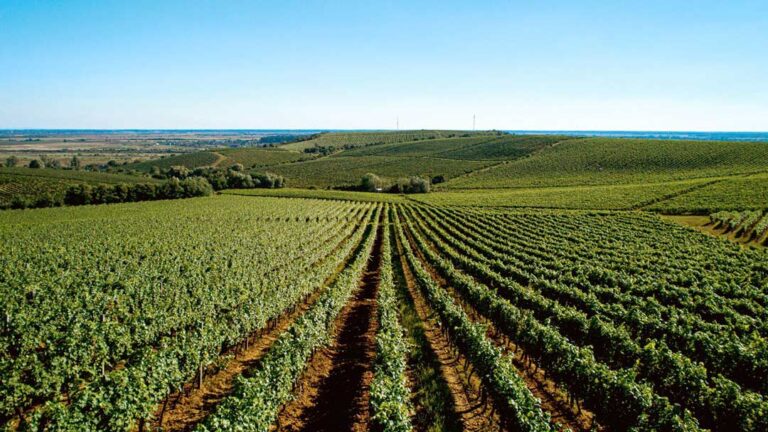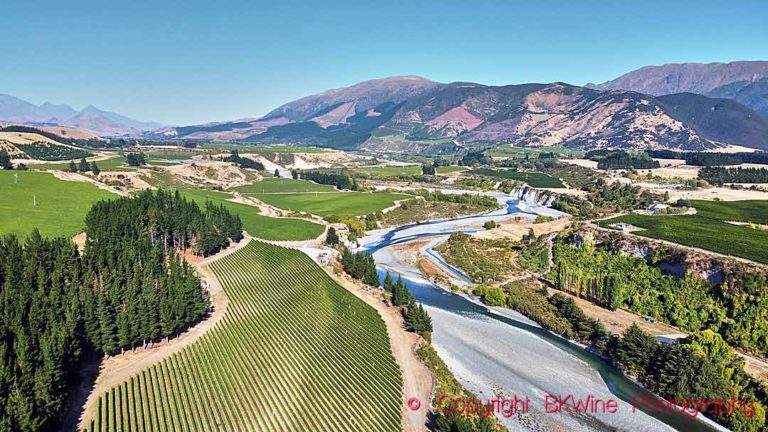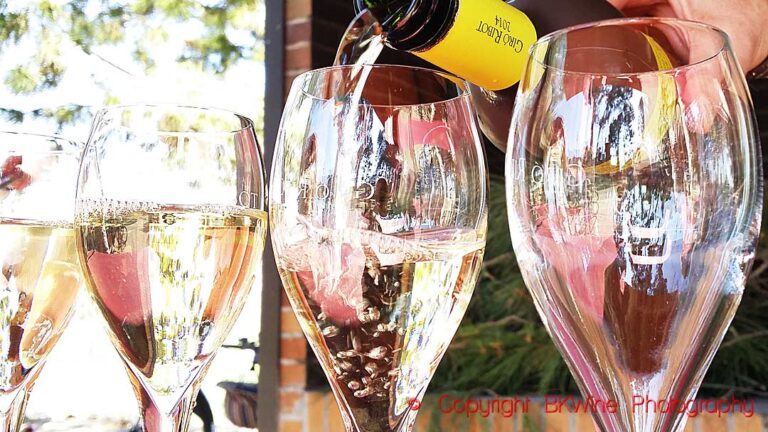The Canary Islands have sun, beaches, volcanoes and tourists. But they also have wine. In fact, they have an important place in the history and evolution of world-wide wine growing. On the Canary Island they still grow ancient grape varieties that have virtually disappeared from continental Europe. But some of these old varieties found their way to South America and are the basis for a very large part of South America’s wine production; the “criolla” family. From these historic varieties the Canary winemakers still make some really delicious – and quite unusual and rare – wines. We have tasted them and tell you the story of the wines and of the grapes.
The vine came to the Canary Islands sometime between the 14th and 15th centuries. Early on, the wines were sold across the oceans and brought income to the islands. Shakespeare wrote about the wines from the Canary Islands. The French King François I and Tsar Alexander I are said to have appreciated them. But despite the long history, most wine lovers today don’t know much about the wine on these islands. We have tasted some bottles from the Canary Islands and were both delighted and interested in learning more.
This is a longer version of an article published on Forbes.com.
The Canary Islands are located off the coast of north-western Africa, 100 kilometres from the mainland, and just south of Madeira. It is Spanish territory. Thanks to a pleasant subtropical climate with long hot summers and mild winters, tourists come all year round. There has been volcanic activity on the small archipelago throughout the ages. Some volcanoes are still active.
For vineyards, the location may seem a bit too far south, at 28 degrees latitude N. It is further south than the vineyards in Morocco. But the big difference is that the Canary Islands are – islands. The landscape is mountainous with vineyards at high altitudes and with significant influence from sometimes extreme winds.
Six of the islands produce wine: Tenerife, Lanzarote, Gran Canaria, La Palma, El Hierro and La Gomera. They all have their own designations of origin (DOP) covering the whole of each island. The largest island of Tenerife also has five smaller DOP regions: Ycoden-Daute-Isora, Valle de la Orotava, Tacoronte-Acentejo, Valle de Guimar and Abona.
So, the Canary Islands have a total of 11 DOPs.
The wine industry in the Canary Islands is thus old, but the modern era began in the 1980s. The vineyards were modernized, and the growers started to export their wines. Organizations that govern laws and regulations, so-called consejos reguladores, were founded. These introduced the first designations of origin, denominaciones de origen, in the 1990s. Wines from the Canary Islands are now exported to some 35 countries worldwide.
The situation in the Atlantic Ocean is challenging for the vines. It rains in winter, but summers are usually very dry with no rain at all. To this, we must add the strong winds. These can have a moderating effect on the hot temperatures, but they also have a drying effect.
The winemakers have learned how to make the vines thrive despite all this. By building low protective walls around the vines, they can retain moisture, and they are protected to some extent from the winds. Sometimes the vines are planted in shallow holes in the black soil for even better protection. They use the same method on another windswept island, Santorini, in the Mediterranean.
Planting density is low, and yields are usually very low.
The advantage is that the islands have been spared some of the diseases that have affected Europe. The wine louse, the phylloxera, has not found its way to the Canary Islands. The vines can be planted ungrafted. Many producers have old vineyards, sometimes over 100 years old.
Several of the wines we tasted has a strong personality. The wines are also interesting from a different perspective. The grape varieties used are old and hardly found anywhere else anymore, which is an advantage today when many wine enthusiasts are looking for the unusual.
We find some of the grapes in South America. They were brought there as cuttings or seeds by Spanish settlers in the 16th century. One of the varieties was listán prieto, which today is found both in California (where it is called mission), in Chile (país), and Argentina (criolla chica). They still grow listán prieto on the Canary Islands, but the grape has almost entirely disappeared from the Spanish mainland.
We have travelled extensively in South America and have tasted both país and criolla chica. So we really enjoyed getting to know the European original of the grape. Listán prieto on the Canary Islands is often relatively light in style, with a lot of red berries and a refreshing fruit, usually with low tannin but enough of it to give structure when coming from the best producers.
The most widely planted red grape, however, is listán negro, a native grape. It thrives on all islands thanks to the fact that it adapts well to different conditions.
Negramoll is a grape that the Canary Islands share with the Portuguese island of Madeira, where it is known as tinta negra (mole). It is used for most of the Madeira wines. Also, there is baboso negro (called alfrocheiro in Portugal) and a grape called tintilla, mainly grown for its intense colour.
The white grapes are mainly listán blanco, malvasía aromática, malvásia volcánia, albillo criollo, vijariego, mostacel and marmajuelo.
The most important of these is listán blanco. It is the same grape as the palomino they use for sherry in southern Spain. It loves a hot, sunny, and dry climate. It gives a pleasant, high acidity to the wines of the Canary Islands.
Malvasía aromática is mainly used in La Palma and Tenerife. It often has intense aromas of grapefruit and apricots and is relatively high in alcohol.
Malvasía volcánica dominates on Lanzarote. It is sometimes also called malvasía de lanzarote. The grape is also found to a small extent in Tenerife, La Palma and Gran Canaria but not outside the Canary Islands. It is well-liked for its quality, something we could see for ourselves during the tasting. It gives an aromatic wine with high acidity and good structure.
(There is an enormous amount of malvasía around the world. Most are not related to each other.)
Albillo criollo is mainly found on the island of La Palma. It gives intensely aromatic wines with freshness and acidity. It contributes finesse, fruit, and structure to a blend. It has a shorter growing season than listán blanco so that the growers can harvest earlier. It also has good disease resistance.
The islands also produce a lot of tropical fruit. Most famous is the Canary Island banana but they also grow, for example, passion fruit, mangos, avocados, pineapple, figs, papayas and others. Some of these fruits are used to produce fruit wines.
Wines from Tenerife
Tenerife is the largest island and also has the most extensive wine production. Tenerife has Spain’s highest mountain, the volcano Pico del Teide, at 3,715 meters above sea level. The mountain is located in the middle of the island. It usually rains a little more on the north side of the mountain than on the south. Three denominaciones are located north of Teide: Ycoden-Daute-Isora, Valle de la Orotava and Tacoronte-Acentejo. The rain-poor south side receives only 300–400 mm of rain. Here we find Abona and Valle de Guimar. Abona has the island’s highest vineyards at 1300–1600 meters altitude.
Atlante 2018, Listán Blanco de Canarias/Albillo criolla, DO Valle de la Orotava, Tenerife
This is a delicious white wine from the small producer Atlante. It has a strong and powerful taste with structure and body. Lovely, high acidity with a lot of citrus, a little spicy (white pepper). A wine with a strong character.
Linaje del Pago Tinto 2019, Listán Negro, DO Tacoronte-Acentejo, Tenerife
DO Tacoronte-Acentejo in the northern part of Tenerife was the first designation of origin to be awarded in the Canary Islands in 1992. Linaje del Pago was founded in 2017. This red wine from listán negro has a pleasant aroma and taste of ripe raspberries, cherries and other red fruits. It is soft and smooth with a certain acidity that gives a backbone to the wine. Excellent, refreshing style.
Rosa Palo, Linaje del Pago Rosado Semiseco 2020, DO Tacoronte-Acentejo, Tenerife
A rosé with some sweetness and an abundance of sweet, ripe raspberries and wild strawberries. The grape is listán negro.
MW Listán Blanco Organic 2018, Vinos Altos de Trevejos, DO Abona, Tenerife
MW stands for Mountain Wines, an appropriate name for this winery as the vines grow at an altitude of 1300 meters. I was amazed by this white wine from listán blanco with its beautiful citrus aromas on the nose. Excellent mouthfeel and long, lingering taste and good freshness. A superb wine.
MW Listán Prieto 2018, Vinos Altos de Trevejos, Tenerife
The grapes come from old vines and a single vineyard. It is light in colour and light in body, which is typical of the grape listán prieto. There is a good intensity in the aromas with ripe fruit and red berries. My thoughts went to pinot noir and gamay, actually. I also found spices such as cinnamon, nutmeg, and other hot spices. Quite complex and a refreshing finish.
Wines from Lanzarote
Lanzarote is the easternmost and northernmost of the islands. The large Timanfaya National Park occupies the southwestern part of the island. Several volcanic eruptions began here in 1730, and they lasted for six years.
El Grifo is a vineyard that has been around since 1775, perhaps the oldest in the Canary Islands. Some vines are from the 19th century. El Grifo is located in La Geria, which was an area completely covered in ash during the eruption of 1730 to 1736. It is very dry here, not far from being a desert. To cope with the water shortage, the planting density is very low, between 300 and 900 plants per hectare, which gives between 1000 kg and 1500 kg of grapes per hectare, extremely little. Typically, a red wine region would harvest between 6000 kg and 8000 kg per hectare.
El Grifo ”Lias” Malvasia Vulcánica, Lanzarote, Canary Islands
An outstanding white wine from Lanzarote’s flagship grape malvasia vulcánica. The citrus aroma is intense and very pleasant, the acidity is razor-sharp. A wine with vitality, complexity, and freshness.
El Grifo Tinto Ariana, Listán Negro/Syrah, Lanzarote, Canary Islands
In this red wine, listán negro is blended with syrah. It is an elegant wine with aromas of dried herbs and a good structure from syrah. The style is light and easy-drinking with generous fruit. It has been aged for around six months in 500-litre oak barrels, which gives a balanced oak character.
Bodega Vulcano de Lanzarote was founded in 2009. The vineyards are at an altitude of 1300 meters.
Malvasía Volcánica Seco 2019, Bodega Vulcano de Lanzarote, Canary Islands
A superb wine with refreshing acidity, body, and structure. Aromas of flowers, melon, citrus. A trace of pleasant bitterness in the finish. A wine with style and character.
Tinto 2018 Listán Negro, Bodega Vulcano de Lanzarote, Canary Islands
Light and elegant with ripe fruit, fresh herbs, also peppery. Savoury with refreshing acidity. Some tannin in the background. The fruit dominates; the wine has only been aged only for a couple of months in oak barrels.
The overall impression of this tasting was very positive, not least the white wines amazed with their beautiful acidity and vitality. The fruity red wines made in the light, easy-drinking style are lovely. Alcohol levels are relatively low at 12.5%-13%.
Canary fruit wine
The Canary Islands have also made a name for themselves with their banana wine, believe it or not. The islands grow bananas and other exotic fruits.
Platé Pasión Frizzante is made from fermented bananas and passion fruit from Tenerife. With an alcohol of only 6%, it is fruity and a little sweet. No artificial flavours or colours are added. A bit like a fruit drink with bubbles.
Platé Blanco de Platano is made solely from bananas, and it has an alcohol level of 12.5%. It is a little bit sweet, and it really tastes like bananas. It felt very exotic.
Maybe you’d be interested in an island-hopping wine tour of the Canary Island archipelago? Probably one of the most unique and exotic wine tour experiences you can imagine. Let us know if you are interested in a Canary Island wine tour (or to somewhere else).






















